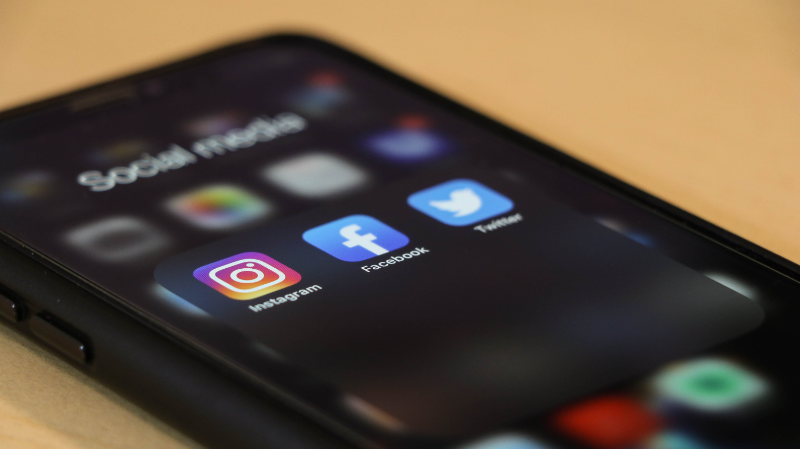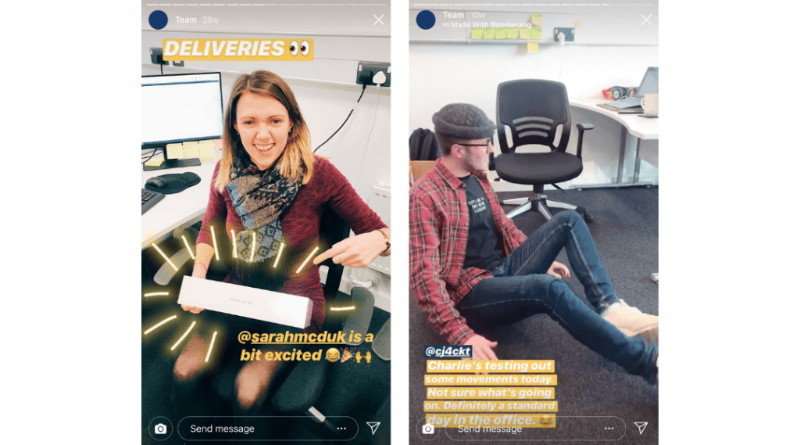Social Media Marketing Hacks to Drive B2B Traffic
October 13, 2020 4 min. read

Boost your revenue today
Сhat with our expert on how to turn existing CRM contacts into revenue
B2B companies aren’t generally known for their social media prowess. They certainly don’t have the same type of glamour as the consumer-facing brands that populate Pinterest or the Instagram Explore Page, and most of us can agree that designer goods are a little bit more exciting than, say, enterprise software or industrial equipment. Nonetheless, social media is still extremely important when it comes to all aspects of B2B marketing – whether that’s lead generation, customer service, or building brand awareness.
In truth, social networks are often the first place people go to learn about new products and services, but many B2B campaigns fail at driving traffic and engagement. So, what’s the secret? Humanization. In order for a B2B brand to succeed on social media, it’s essential to think like a person and not like a brand. These hacks can help.
Get Personal With Your Videos
Video is essential to any social marketing strategy — not just B2B marketing strategies — and that’s because it drives results. According to research from Wyzowl, 87% of video marketers say video has increased traffic to their website, and people are generally twice as likely to share videos than other types of content. Overall, 84% of people say they’ve been convinced to buy a product after watching a brand’s video.

This same rings true for all kinds of businesses; however, B2B companies often fall short by posting overly technical, wildly boring product demos. Let’s be honest: sometimes listening to a voiceover while watching a video composed of nothing but text and graphics is a test of endurance, which is why B2B businesses need to get personal. Include a brand front person in your videos, someone your consumers can get to know and invest in. Let them know there are real people behind your product. It’s far more engaging to listen to an actual person than a cold voiceover.
Use Real People To Talk To Your Audience
Similar to video content, B2B businesses have an unfortunate knack for sounding a little robotic in their social copy, particularly in more industrial sectors. When people feel like they’re talking into a void rather than with a real-life person, it’s much harder to solicit the kind of emotional investment that builds brand loyalty and drives up engagement. For this reason, it’s important to humanize your social interactions by utilizing real people to initiate engagement and nurture leads.
Humanizing a brand’s voice is simpler than it sounds – and it starts with replies. For example, if you’re running customer service interactions through a single Twitter account, you can let customer service representatives sign off with their real names or initials during interactions. You could also use a front-facing brand representative to make regular updates. Anyone initiating outreach should have a name and a face that people can know and invest in.
Go Behind The Scenes
This is a preferred strategy among consumer-facing brands, but going behind the scenes is a great way for B2B businesses to drive traffic as well. People don’t just invest in a brand, they invest in a culture, and the only way to show your company culture is to jump behind the scenes. Post photos and short videos of your employees living their regular day-to-day, host a live-streamed Q&A with members of your staff, and do anything you can to show people what working with your brand is actually like. This is especially true now, in this exceptional time when the vast majority of office jobs are remote. Staff-made BTS photos and videos of regular day-to-days that potentially involve kids running around, lawn mowers in the background, and unexpected pet visits, may build that emotional connection your prospective B2B customers need to take the next step (plus you may discover some untapped creative talent amongst your staff members).
Instagram Stories and Instagram Live are a great way to go behind-the-scenes, though they’re generally underutilized by B2B businesses. Instead, you may prefer to post personal BTS updates on LinkedIn or utilize Facebook Live.

Always Use The First Person
Since humanization is what drives traffic, you’ll want to use the first person when you’re writing a blog post. People don’t want to feel like they’re being talked at – they want to feel like they’re being talked to. Far too often, B2B businesses – particularly ones in very technical fields – start to sound a little bit like a textbook or encyclopedia entry, but that’s not really the kind of thing that keeps attention. The type of blog posts that drive traffic and conversions make people feel like they’re chatting with an old friend. In this case, a simple “we” or “I” goes a long way.
Don’t Be Boring
This seems like a given, but it needs to be said: don’t be boring. B2B content is notorious for being overly self-promotional and dry. It’s like a one-two punch of everything a reader wouldn’t want to click on or share. This doesn’t have to be the case, and you – and your audience – deserve better.
The key to avoiding that trap of so-called “boring” content is searching for a unique angle that serves more than just your target demographic. It should be valuable information and go way deeper than anything shared on your pricing page. For example, you could pull data to create an industry-specific infographic with a human angle. Or you could go even simpler and create a post with fun facts.

IBM takes the fun fact approach in the Twitter post above. As you can see, this isn’t your typical overly self-promotional or boring post. It actually engages the user by sharing some interesting historical facts about the company.
Don’t Forget The CTAs
Want traffic? Ask and you shall receive. Never underestimate a well-placed call to action. CTAs – whether they’re in social media posts, blog posts, or on your company’s website – stoke a sense of intrigue that leads to clicks and, in the ultimate scenario, conversions. Bonus points if that CTA also creates FOMO (or a fear of missing out).
Author bio:

Ryan Gould
Vice President of Strategy and Marketing Services at Elevation Marketing
From legacy Fortune 100 institutions to inventive start-ups, Ryan brings extensive experience with a wide range of B2B clients. He skillfully architects and manages the delivery of integrated marketing programs, and believes strongly in strategy, not just tactics, that effectively aligns sales and marketing teams within organizations.
More useful content on our social media:
